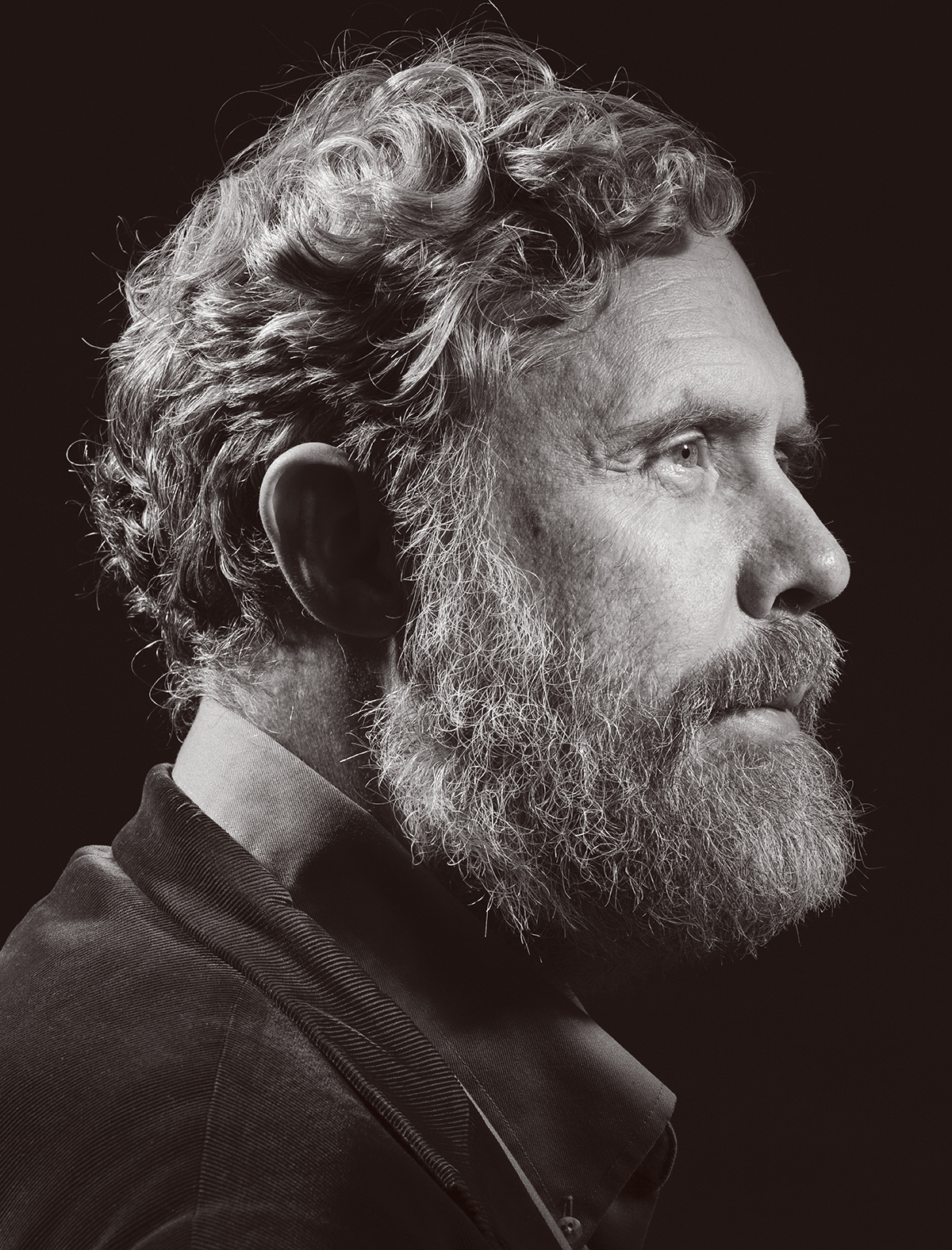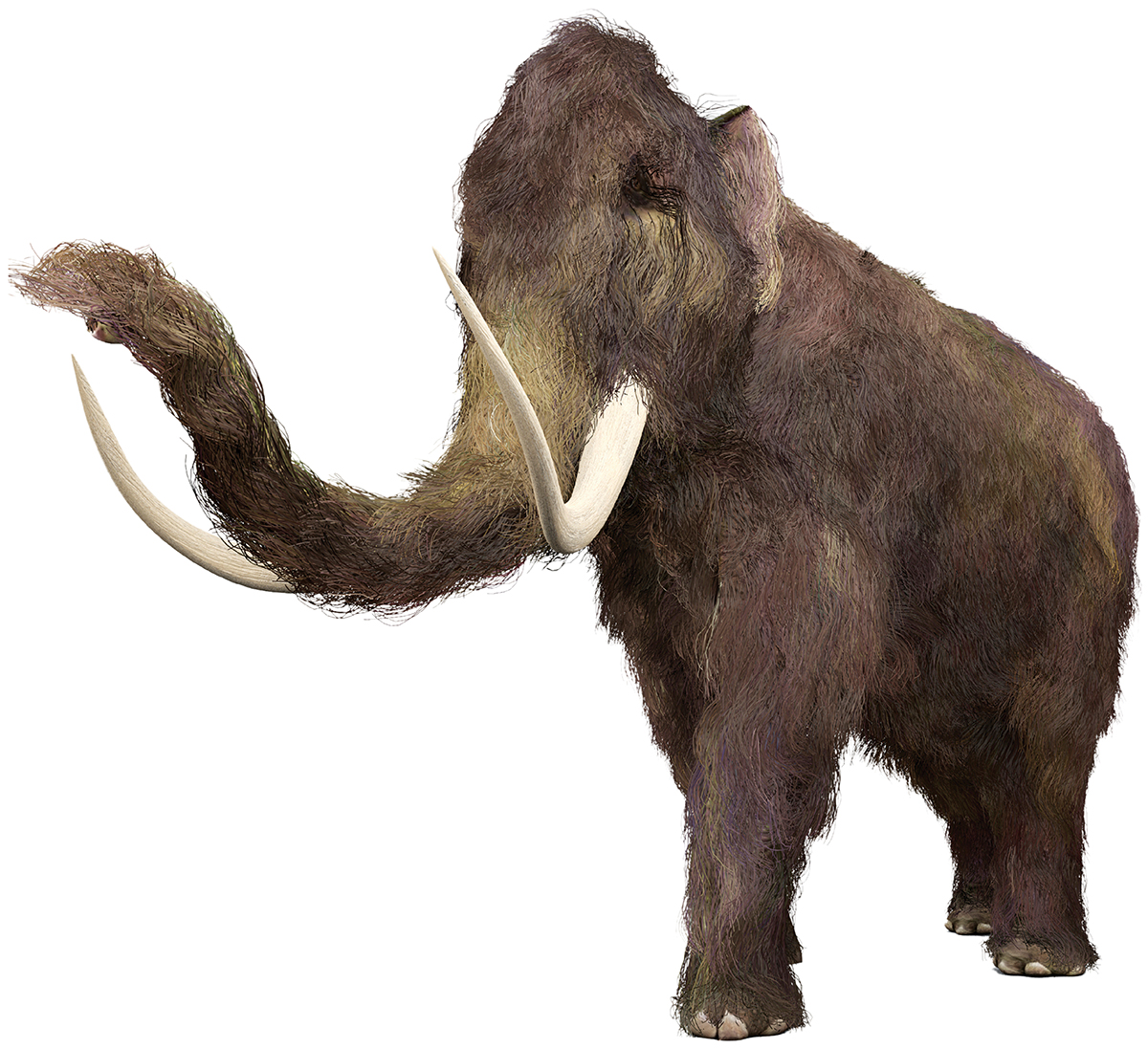DNA Wars in Cambridge

Harvard geneticist George Church is cooking up a real-life Jurassic Park. / Photograph by Jason Grow
Harvard geneticist George Church has a wild plan to fight global warming: He wants to bring the woolly mammoth back from extinction. “The idea,” he says, without batting an eye, “would be to make herds of mammoths.”
As far-fetched as that sounds, scientists in Church’s lab at Harvard Medical School have already taken huge steps toward unleashing a real-life Jurassic Park: Last year they spliced ancient woolly mammoth DNA into the genome of endangered Asian elephants, hoping to give the elephants a mammoth’s thick hair and dense layer of fat to survive in freezing temperatures. Church’s vision is to bring his army of pachyderms to Siberia, where their massive footsteps could help keep the permafrost permanent and prevent climate change.
At 6-foot-5 with wavy hair and a beard that would make Charles Darwin jealous, Church looks like a time traveler from the past. Yet he’s earned a reputation as a provocative futurist thinker. His 2012 book, Regenesis, forecasted a day when genetic engineers could revive extinct species and alter human genes to cure and ward off diseases. It read like science fiction—yet by the time the paperback edition came out two years later, Church added in the afterword that he had recently co-invented a technique that could actually make it all happen.
The magical, cutting-edge tool is called CRISPR-Cas9. Technically, that stands for “clustered regularly interspaced short palindromic repeats,” a gene-and–protein system found in bacteria, but what really matters is that it makes it fast and easy to edit DNA. In the simplest terms, it’s a revolutionary discovery that gives humans the almighty power to rewrite the code of life.
Four years ago geneticists figured out how to use CRISPR-Cas9 to snip and splice DNA in mammals’ cells. Now the race is on among scientists and pharmaceutical companies to harness this new gene-editing technology for medical breakthroughs. CRISPR may hold the elusive cure for such genetic diseases as sickle cell anemia. It could also produce life-saving treatments for cancers, neurological diseases, and HIV; help edit out disease in pig organs to use them as human transplants; and even stop mosquitoes from carrying malaria, a disease that afflicted 214 million people worldwide this past year.
While its lifesaving potential is global, CRISPR—which could prove to be a scientific breakthrough on the same scale as vaccinations or the birth-control pill—is being developed right here in our own backyard. “Boston and Cambridge are the centers of CRISPR,” Church says. Many of the major players in the CRISPR world work for Harvard, MIT, or Boston hospitals. Early meetings about advances in the technology nearly all took place within a couple of square miles, Church says, because “it was the only way that we could get a significant fraction of the inventors and academics involved.”
In 2013 Church, along with CRISPR pioneers Feng Zhang, of MIT, and Jennifer Doudna, of the University of California at Berkeley, founded a startup in Cambridge called Editas Medicine, dedicated to perfecting CRISPR gene editing. But since then, the company’s creators have parted ways and Boston has become a battlefield upon which scientists, universities, and companies fight for lucrative patent rights to the technology. So far, three major biotech firms—all with labs about a mile or two from one another, just north of the Charles—are racing to invent the first CRISPR-powered medical therapies. Zhang currently holds the most valuable patents—the El Dorado of futuristic medicine. But the degree to which he needs to share the credit and reward for CRISPR with researchers elsewhere is now the subject of a fierce dispute that’s set to be decided by the U.S. Patent and Trademark Office. Billions of dollars are at stake, and so is a potential Nobel Prize—to say nothing of millions of lives.

Depending on which scientist you ask, Zhang is either the first person to figure out how to edit human genes with CRISPR, or the guy who stole the credit from the people who did. Either way, 34-year-old Zhang is a brilliant, driven researcher and MIT professor who is currently at the top of the CRISPR mountain. He, along with the Broad Institute of MIT and Harvard, hold the most important CRISPR patents, and they’re hell-bent on protecting them.
Inside the Broad Institute office, on Main Street in Cambridge, Zhang’s walls are covered with notes in black marker. DNA double helixes twirl near the names of human genes such as CCR5, which, if edited, could make someone resistant to HIV. Zhang is enthusiastic and restless in conversation, yet calm and disciplined when it’s time to talk DNA.
Born in China and raised in Iowa, Zhang was the type of ambitious student that other kids love to hate: As a sophomore in high school, he volunteered at a gene-therapy lab; by his junior year, he created a high school genetics project that won him a $50,000 scholarship; and as a Harvard undergrad, he coauthored a paper on flu viruses. He even put himself on track for a possible Nobel Prize six years ago as one of the researchers developing optogenetics, a method of controlling neurons with light. Then, in January 2011, at the tender age of 29, Zhang opened his own lab at the Broad Institute to experiment with gene editing. At the time, though, DNA-editing tools were slow, costly, and inefficient. “It was not an easy-to-use system,” Zhang says. “It was very cumbersome.” Frustrated, he began searching for new gene-editing tools. Then a visiting speaker mentioned CRISPR.


